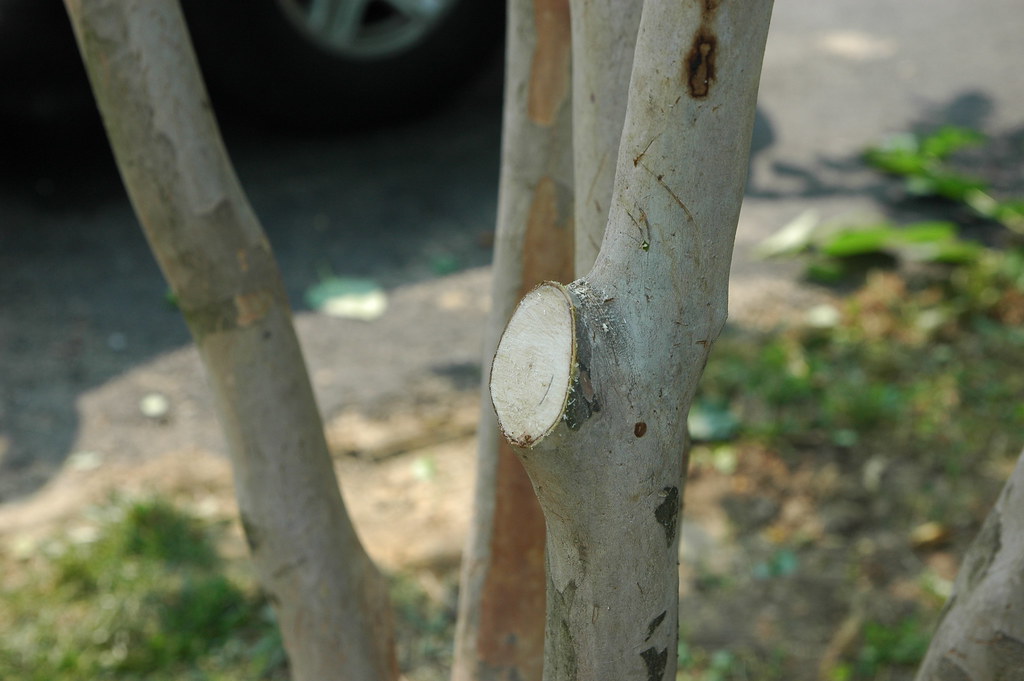 |
| A clean final cut. |
So if you’ve noticed any trees with dead or damaged parts, don’t wait until winter! You can help your tree out now. Before you begin, here are a few things to keep in mind:
- Don't over-prune! No more than 25% of a tree’s canopy should be pruned in one year—especially if you are working with a young tree.
- Prune parts that are threatening to the tree’s health. Branches that are dead, damaged, or crisscrossed all qualify.
- Leave elm trees alone for now. Because of their susceptibility to Dutch elm disease, elms should not be pruned during summertime.
- Always wear head and eye protection to avoid injury.
- Some pruning care—such as the use of a chainsaw to remove extra heavy branches or branches far out of reach—should be handled by a professional. Check out the replay of last week’s Tree Talk Thursday for more information on certified arborists.
 |
| A twisted branch can harm an otherwise healthy tree. Photo credit: HaeckDesign |
Since pruning is a skill that takes practice, it is best to learn how to prune from an expert before trying it on your own. We suggest becoming a Citizen Forester. Citizen Foresters can participate in our pruning events, which will take place once a month for the remainder of the summer. For dates and locations see our calendar. If you’re interested in becoming a Citizen Forester, sign up for our next qualifying class: Trees 101. If you really want to get into pruning, we also provide training sessions in the winter where you can officially become a Citizen Pruner.
For more pruning information, check out the Department of Agriculture's "How to Prune Trees" pamphlet. Thanks for helping us take care of the District's trees, and don't forget to check back for more summer tree care tips!

No comments:
Post a Comment